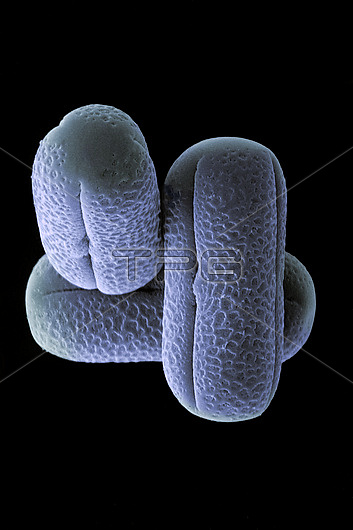
Scanning electron micrograph of 3 pollen grains of the garden pea, Pisum sativum. Shaped like a gelatine capsule 30 microns long, each has 3 furrows with an exit site for the pollen tube halfway along its length (2 seen here). The patterned wall contains sporopollenin; a family of exceptionally inert complex polymers found in the walls of pollen grains and moss spores. The wall protects its living contents from damage, dehydration and UV light. It persists unchanged for millions of years after its biological purpose is achieved. Wall patterns are specific; ancient pollen can show which plants grew at a site in the distant past. Nowadays, microcapsules of sporopollenin - mainly from moss spores - are used as vehicles for controlled delivery of pharmaceuticals ("slow release" products); their structure and chemical inertness also offer a method for the administration of oral vaccines
| px | px | dpi | = | cm | x | cm | = | MB |
Details
Creative#:
TOP26709395
Source:
達志影像
Authorization Type:
RM
Release Information:
須由TPG 完整授權
Model Release:
N/A
Property Release:
N/A
Right to Privacy:
No
Same folder images:

 Loading
Loading